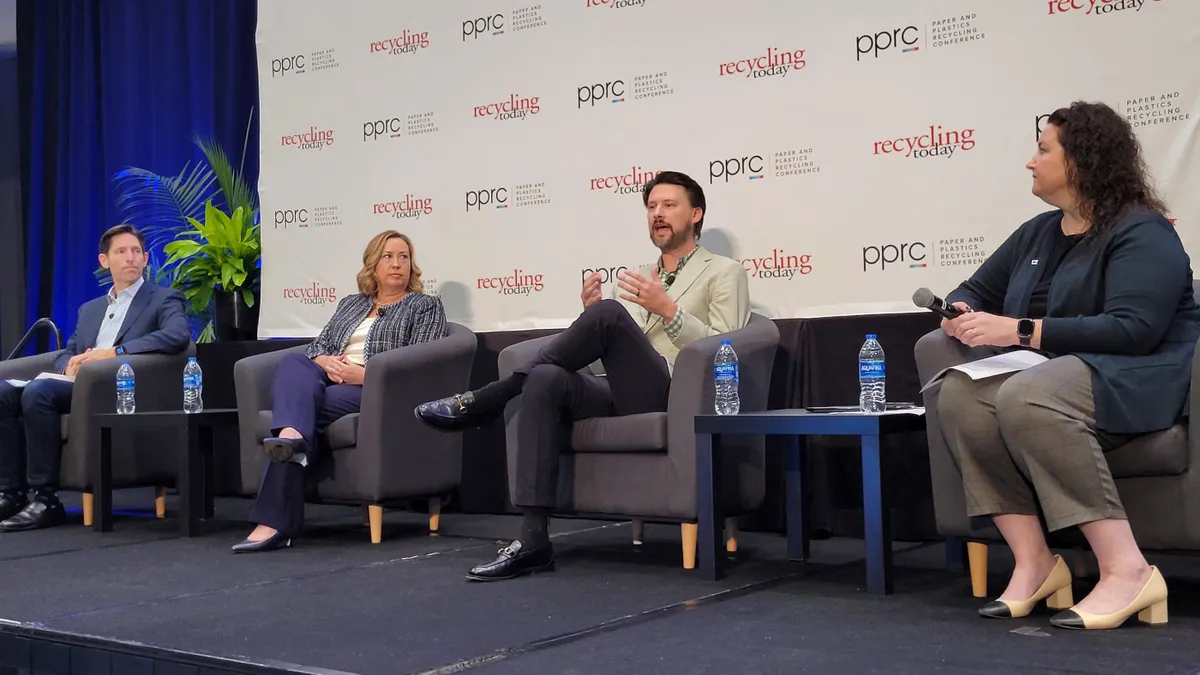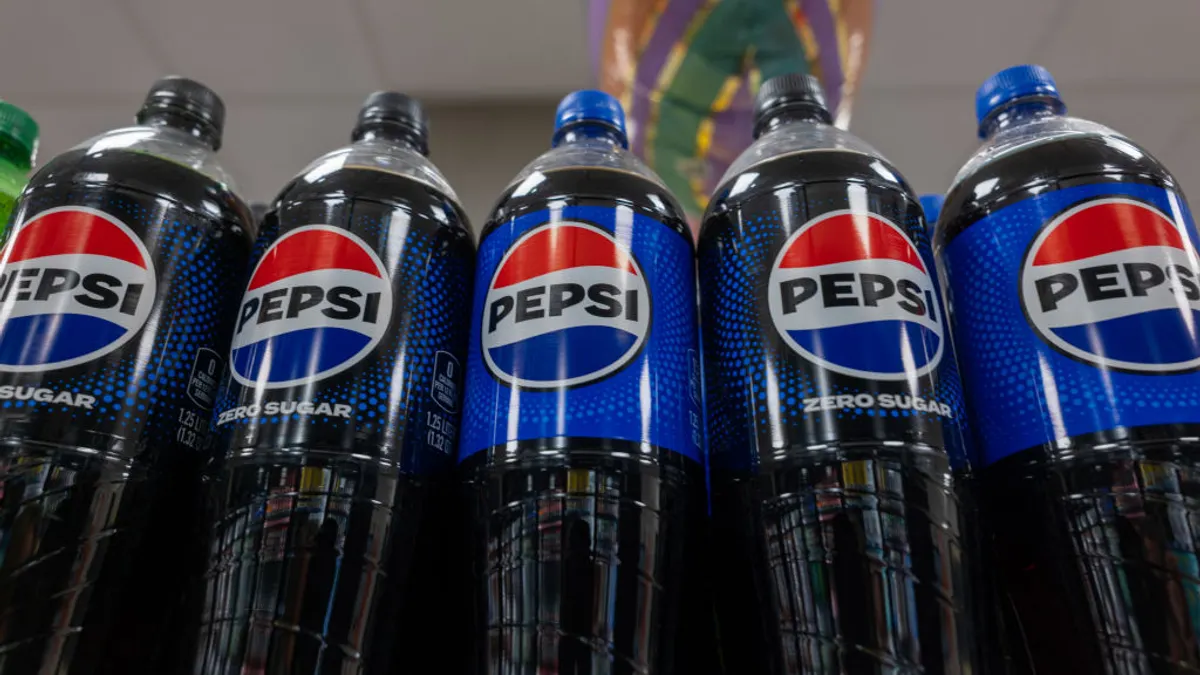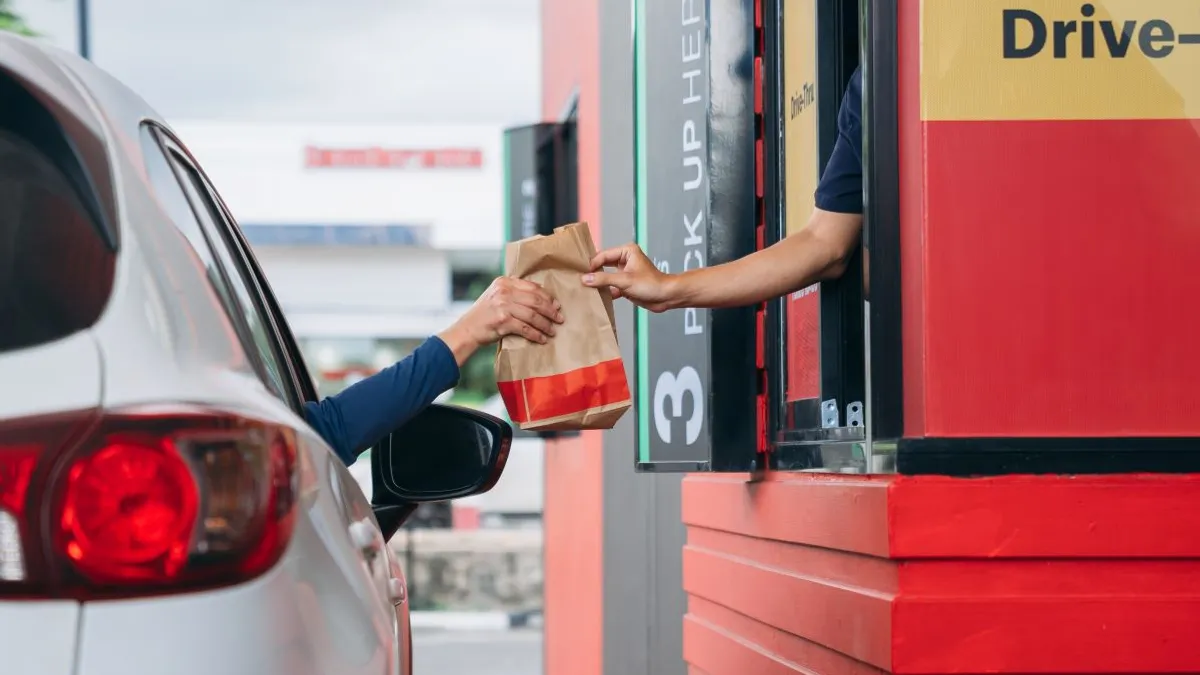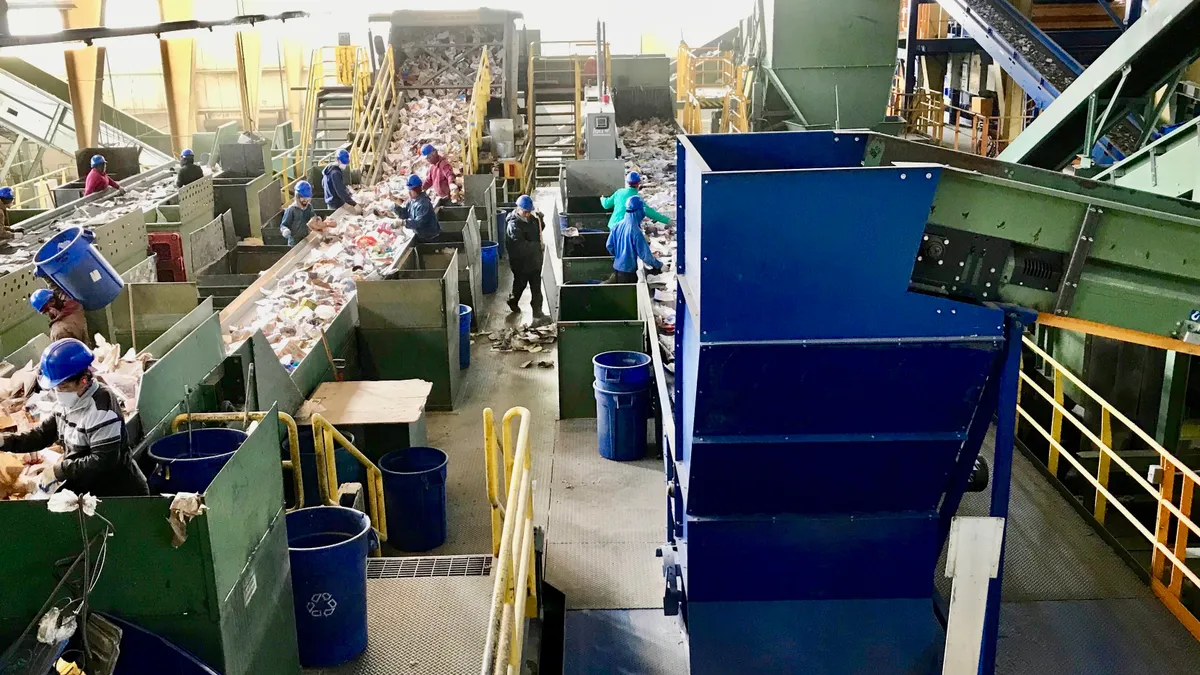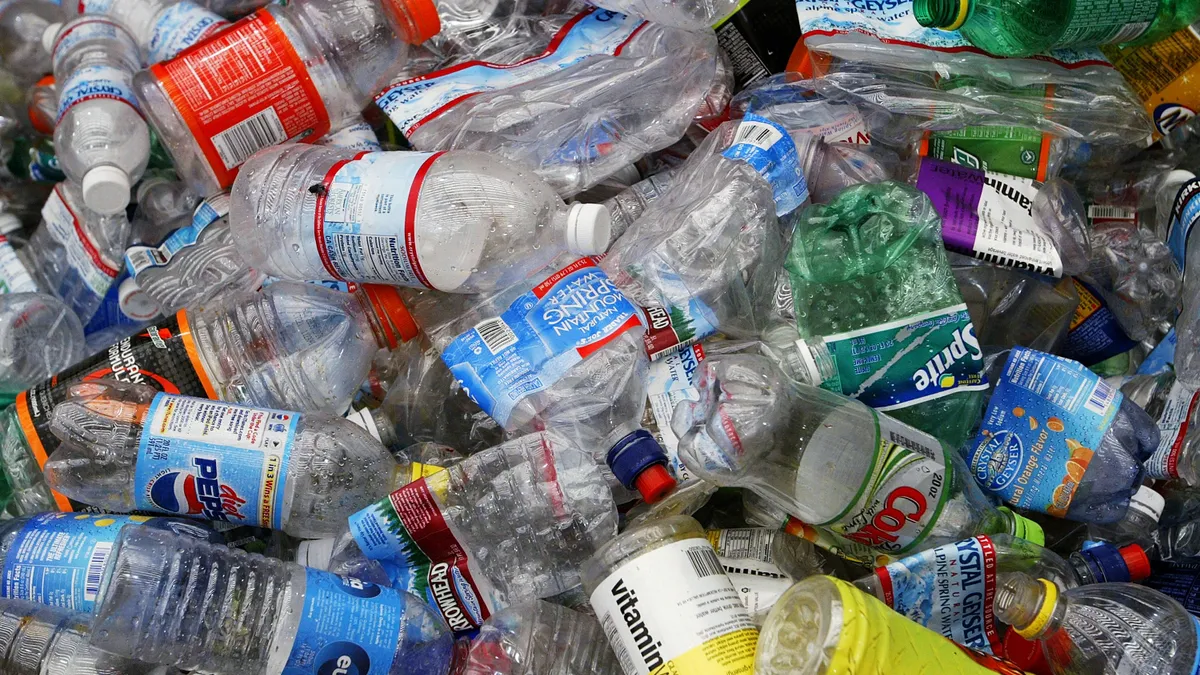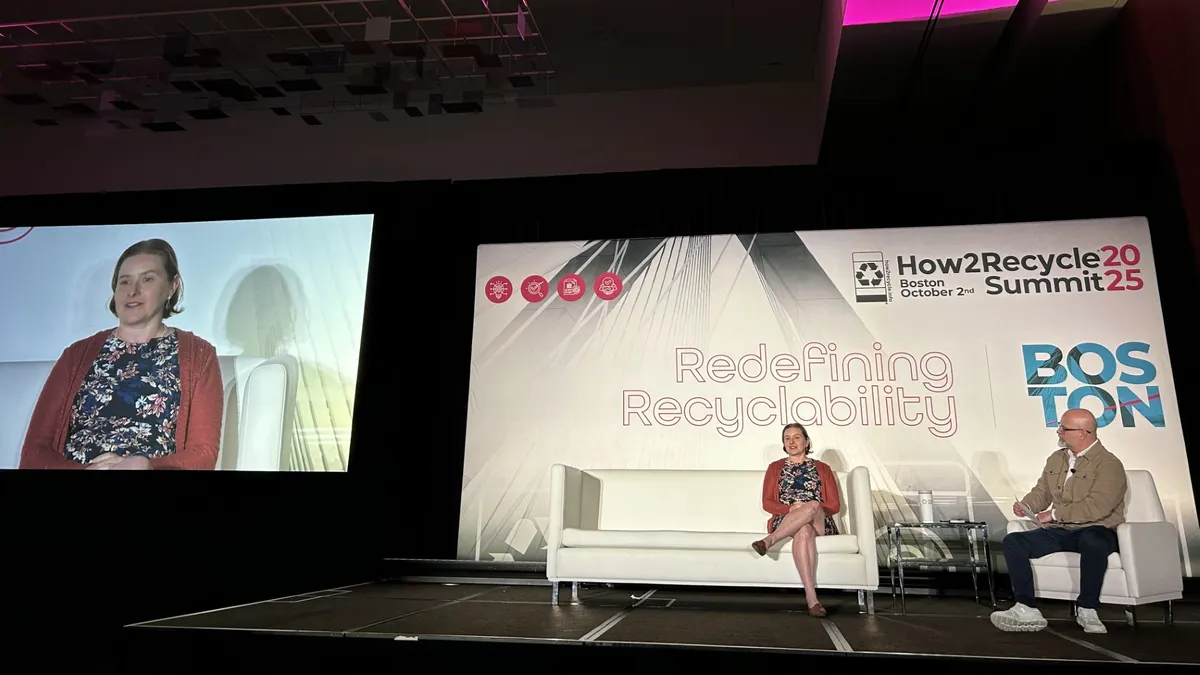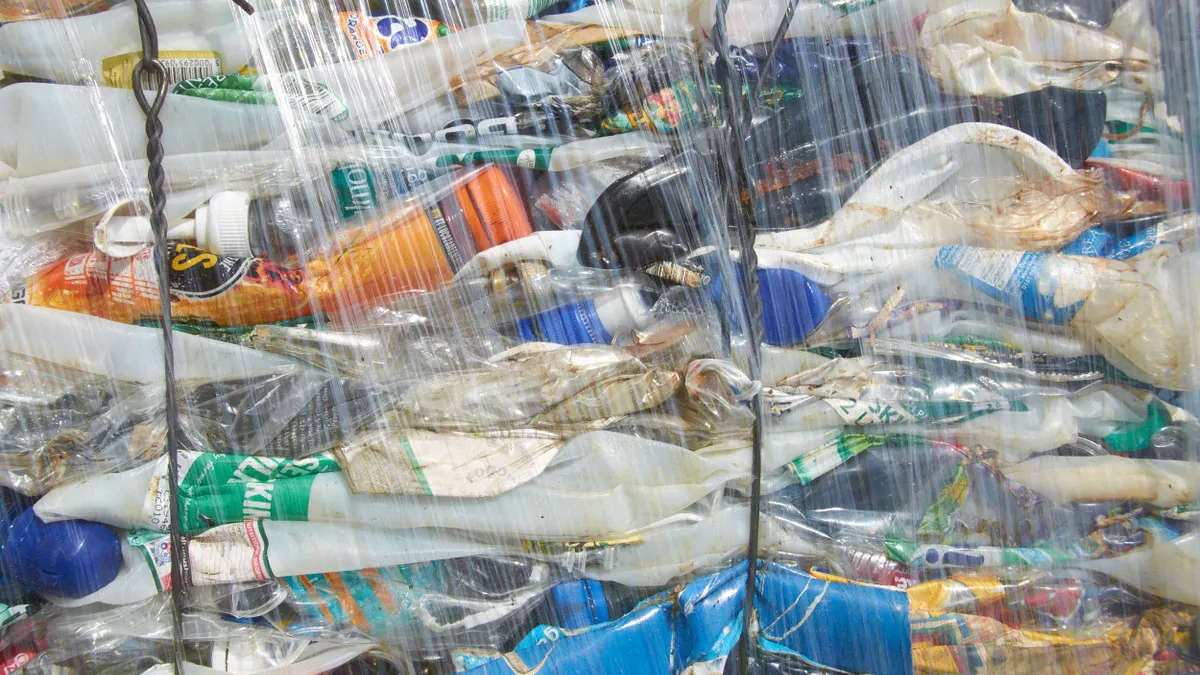Questions about extended producer responsibility for packaging programs are slowly getting answered as states advance their laws. With so many moving parts to consider, stakeholders say prioritizing work on different aspects of these policies is key. Responsible end markets are one of those top concerns — and are turning out to be a contentious issue, speakers discussed during a session at the Paper and Plastics Recycling Conference on Oct. 16.
Some aspects of EPR programs, like ecomodulation, won’t be a priority until later. On that front, “There's a sense of, ‘Let's kind of get the program rolling, and then we can look at maybe the next program plan amendment,’” said Scott Byrne, vice president of global sustainability at Sonoco.
But identifying responsible end markets isn’t something many stakeholders believe can be pushed down the line, Byrne said, calling it the most contentious issue he has encountered while serving on Oregon's Recycling System Advisory Council.
There’s a lot of tension surrounding the end markets issue, but in many ways it’s “a good tension,” he said.
“If you get that wrong, it could almost be existential to the program. If the end markets haven't signed up, and MRFs can't move that material, the whole system becomes very fragile,” Byrne said. “Some of the stakeholders are saying responsible end markets are almost a cornerstone of the program” and need to be tackled right away, although others say “we need to make sure the program works first.”
Highlighting how quickly the EPR for packaging space has changed in a short time, Byrne described his experience speaking about responsible end markets at a conference about three years ago, when “we didn't really know what it meant.”
“I told the people in the audience, Oregon is going to tell you where you can sell ... these materials. And there were folks in the audience that basically were like, 'Come and take it. They're not going to tell me what to do,'” he said. “I think we now realize that ... they will tell you what markets you can sell into, how you can move materials.”
Jeff Fielkow, CEO at Circular Action Alliance, noted that responsible end markets are a focal point for his producer responsibility organization.
“The markets need to be there. I'm less concerned about the stability of the pricing and more concerned about the stability of being able to take [the materials],” Fielkow said. “We have to make sure that the markets constantly move and then it's easier to financially solve the volatility.”
‘Feast and famine’
The end markets focus addresses a common concern: If EPR laws largely aim to boost collection and recycling rates, industry runs the risk of winding up with too much material and nowhere to sell it.
Working this out at the get-go could make sense considering the long trend of volatility in recycled material markets. “There is so much turmoil in the markets right now,” said Shannon Crawford Gay, director of recycling and environmental policy at WM.
Globally, end markets for certain commodities “are extraordinarily weak,” Fielkow said. He mentioned the potential for EPR to balance the “feast and famine” nature of investments in the industry.
“The high volatility is always what's created problems for long-term investments,” Fielkow said, citing EPR as a tool to help “smooth that out and actually support the industry.”
“Even when markets go weak, [EPR] enables the industry — the haulers and the MRF operators — to remain profitable,” he said. “The other benefit, I think, of EPR is helping balance two elements: volume of material and quality of that material.”
The role of niche end market groups
A lot of change is happening quickly with EPR. People shaping the policies need to consider how regulations impact materials already in the marketplace along with future innovations, speakers said.
“How do we not disrupt what's working today and then prepare for tomorrow?” said Lynn Dyer, executive director at Ameripen.
Already, numerous industry-run voluntary programs exist for specific materials. Fielkow cited legacy industry collaboration in the 1990s to get PET water bottles added as an accepted material in recycling streams, in addition to more recent work on cartons.
Paper cups are another category more widely accepted for recycling during the last few years thanks to niche programs. The Foodservice Packaging Institute, where Dyer previously worked for 20 years, has been instrumental in championing paper cup recycling and getting more than 40 mills across the United States on board with accepting paper cups. “We were at zero end markets that would accept paper cups when we started the program back in 2011,” Dyer said.
But will these niche programs interfere with broader EPR end market work?
“I don't think those disappear. Because frankly, there's still going to need to be some specific work on specific materials,” Dyer said. “CAA is going to work on everything as a whole, but there'll still be opportunities to do these little projects.”
As with other complicated regulations, working out end markets and other aspects of EPR will take time, speakers said.
“Allow us to get a year or two under our belt running programs” before CAA can definitively identify effective and ineffective strategies, Fielkow said. "Allow the time to let these programs incubate, and then we can continue to build the next wave."


